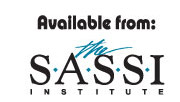 |
 |
The BADDS is an empirically developed and validated psychological tool that measures attitudes, behaviors, and intervention effectiveness related to impaired driving.
Administration of the BADDS can be conducted in individual or group settings. The BADDS can be used as a pretest to measure attitudes and behaviors related to impaired driving for an initial assessment, or in a pre-post fashion to assess intervention effectiveness. Aggregate results (class-wide or program-wide) can help identify areas of program content that have successful impact and others that may need to be modified. Aggregate scores can also be used to evaluate program effectiveness. The BADDS is appropriate for assessing impaired driving attitudes and behaviors across varying demographics and settings.
The BADDS has demonstrated high levels of internal reliability and test-retest stability, as well as discriminant, criterion, and construct validity. Drs. Jeremy Jewell and Stephen Hupp, developers of the instrument, have examined data from individuals with prior impaired driving arrests as well as non-offenders, making the BADDS a highly desirable instrument for both clinical as well as research applications.
Current Research
Ongoing research by Drs. Jewell and Hupp of Southern Illinois University Edwardsville continues to examine the psychometric properties of the BADDS in various populations. If your organization is interested in joining a study or would like more information on current research on the BADDS, please contact Dr. Jeremy Jewell or Dr. Stephen Hupp at research@theBADDS.com.
Sensitivity to Change
Drs. Jewell and Hupp have conducted multiple studies to test sensitivity to change after an intervention. In these studies, the BADDS was used to examine the effects of various tools for preventing drinking and driving on attitudes and behaviors related to impaired driving. The BADDS proved to be highly sensitive to change using even the briefest prevention program tools.
Future Research
Future research will investigate the long term predictive validity of the instrument with DUI offenders. Further research is being conducted to determine the BADDS’ sensitivity to change with other prevention program tools, such as ‘shock’ videos. Additional research using the BADDS with a teenage population is being planned as well.
Predictive Validity
While research continues to determine the BADDS’ predictive validity, current findings indicate strong associations between scores on the attitudes scales and impaired driving behaviors. Findings indicate that higher Rationalizations for Drinking and Driving, Lenient Attitudes toward Drinking and Driving, and Likelihood of Drinking and Driving scale scores are predictive of increased incidence of future drinking and driving and riding behaviors with an impaired driver.
Publications
Hupp, S. D. A., & Jewell, J. D. (2010). Brief Report on Assessing Common Rationalizations for Drinking and Driving: Comparisons of a DUI Court Group and Traffic Court Control Group. Impaired Driving Update, Summer.
Jewell, J. D., Hupp, S. D. A., Lazowski, L. E., & Miller, G. A. (2007). Reliability and validity summary of the BADDS. Springville, IN: The SASSI Institute. Download >
Jewell, J. D., Hupp, S. D. A., Lazowski, L. E., & Miller, G. A. (2007). The Behaviors & Attitudes Drinking & Driving Scale (BADDS) User's Guide & Manual. Springville, IN: The SASSI Institute.
Hupp, S. D. A., & Jewell, J. D. (2008). Evaluating programs for impaired driving: More effective tools are arriving to measure change in the DWI population. Addiction Professional, 6(2), 29-31.
Jewell, J. D., Hupp, S. D. A., & Segrist, D. (2008). Assessing DUI risk: Examination of the Behaviors & Attitudes Drinking & Driving Scale (BADDS). Addictive Behaviors, 33, 853-865.
Jewell, J. D., Hupp, S. D. A., Segrist, D. J., Lider, R., McMurray, W., & Tintori, A. K. (2008). The effectiveness of virtual reality technology in preventing drinking and driving. In Columbus, F. (Ed), Traffic Accident Causes and Outcomes. Nova Scotia, Canada: Nova Science Publishers.
Jewell, J., & Hupp, S. (2005) Examining the effects of fatal vision goggles on changing attitudes and behaviors related to drinking and driving. The Journal of Primary Prevention, 26, 553-565.
Jewell, J. D., Hupp, S. D. A., & Luttrell, G. (2004). The effectiveness of Fatal Vision goggles: Disentangling experiential versus onlooker effects. Journal of Alcohol and Drug Education, 48, 63-84.
